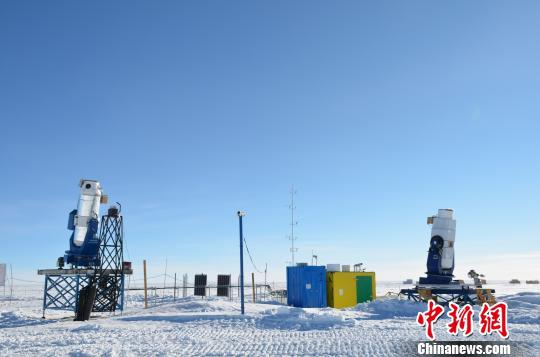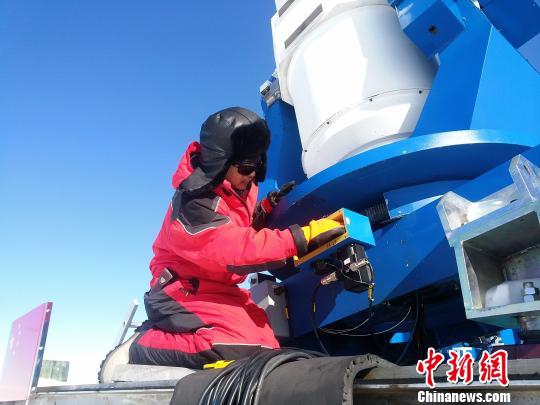Antarctic inland is considered that it couldn’t been touched by human because it is very cold and wilderness. By adding the air blowers and “clairvoyance“, Chinese scientists have upgraded the telescopes that installed at Kunlun station in Antarctic inland. Up to now, the unattended and remotely automatic observation has been achieved for the three telescopes that installed at Kunlun station. Associate Professor Yang Shihai, Institute of Astronomical Optics and Technology, published the above results on 15th April in Nanjing. He participated in the Chinese 32nd Antarctic expedition team and started his expedition on last November. Then he came back Nanjing in April 2016 after nearly 30,000 nautical miles voyage and 129 days. He was the chief executive of the Antarctic astronomical telescope maintenance mission. According to Yan Shihai’s introduction, so far three telescopes have been installed at Kunlun station, which is on top of the world in number, including AST3-1, AST3-2 (two Antarctic survey telescopes) and “Chinese Star” small aperture telescope array. Kunlun station was in Antarctic inland. The distance between these Kunlun station and Zhongshan station that located in the coastal areas is 1250kms. With unique observation conditions and harsh natural environment, telescopes must withstand the harsh environment --- 4087 meters above sea level and very low temperature reached -80℃. Yang Shihai said, the first thing after he reach Kunlun station was cleaning up the site, and then to “check” the telescope—to troubleshoot and repair the faults that found during last year observation. And the software and hardware of AST3-2 were also upgraded. Frosting and snowing always caused the pictures unclear that taken by the telescopes. One of his missions was to install 3 air blowers for AST3-2 to blow the snow off the mirror. It would keep the mirror clear and take the images clearly in Nanjing, ten thousands of miles away, by remote mode. The air blowers were set up on the top of a steel frame which was two to three meters high from the on-site picture. The air was blew directly to the mirror. The temperature of the air was under control and it could be cold or warm. In order to monitor the site, mini-cameras were also installed beside the air blowers. Our scientists could check and control the telescopes by only moving mouse from ten-thousand miles away. It seemed very simple to install air blowers and mini-cameras. But in Antarctic it was a time-consuming and labor intensive hard work. Yang Shihai said that it was bitterly cold outside at Kunlun station. In order to do some precision task, he had to take off his gloves. He felt strong feeling of burning when he touched the extremely cold metal. He was frozen after tens of minutes working in the cold wind. Then he had to go inside to recover. In the future, more and more telescopes will be installed at Kunlun station. The new solar panels and wind power generator have been set up in this expedition. This can supply more power for new telesocpes. Dr. Li Zhengyang, Nanjing Institute of Astronomical Optics & Technology, told reporters that AST3-3 is developing in Nanjing and also will shipped to Antarctic. It is expected to break through the bottleneck of carrying out near infrared observation in China. 
Chinese scientists add the air blowers and “clairvoyance“ for Antarctic telescopes(left) 
Chinese scientist upgrad Antarctic telescope |